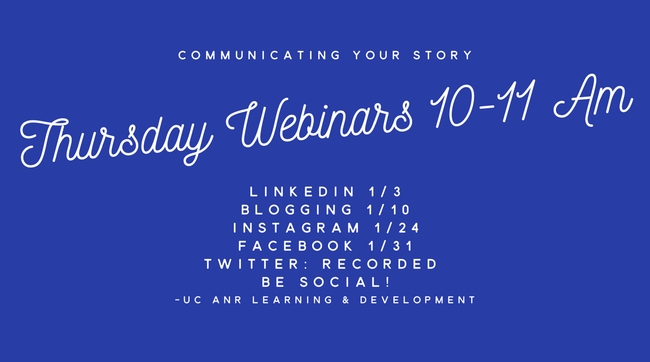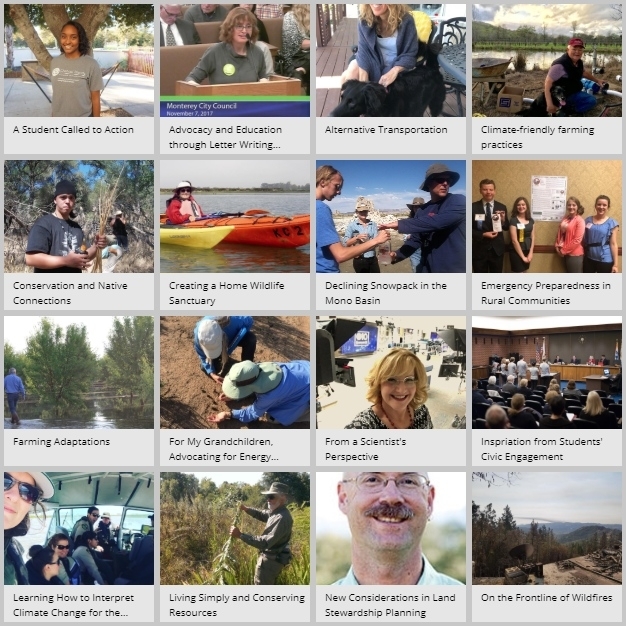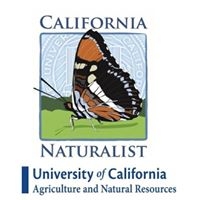4-H & Families
You can support the future of the University of California
University of California staff are an integral part of a system with a high purpose. Every staff member plays a role in supporting the University's mission: Educating the best and brightest from all backgrounds, ethnicities and incomes, conducting research that touches the lives of people across the globe, and providing critical public service across California in areas such public health, agricultural science, nutrition and youth development.
Our future depends on the support of the elected leaders in the state and our nation's capital. This is an area where you, with your first-hand knowledge of the University's value, can play an important role.
In addition to being a UC staff member, you are a constituent of your government representatives. They want to hear from you. You have a unique perspective of UC ANR and your community. You can share honest communications with these leaders to gain support that is crucial to the future of the University of California. If you would like to add your voice to the voices of many others in support of UC, join the UC Advocacy Network, UCAN. (https://www.universityofcalifornia.edu/support-uc/ucan)
UCAN was launched last year to engage staff, faculty, students and alumni who want to advocate for the future of UC. More than 17,000 people have already chosen to get involved, and there is significant room for growth, said Meredith Turner, associate director of Advocacy and Institutional Relations.
“We have hundreds of thousands of employees, nearly 2 million alumni, and thousands of students,” Turner said. “There is a huge group of people who could join this community.”
When you “opt-in,” you will occasionally receive email alerts about issues vital to UC. The emails provide basic background on the topic. You choose whether to click “take action,” which brings you to a webpage with more information and a form where you can fill in your name, email and home address. The form contains a suggested message for your local government officials, but you can edit the message and personalize it, if you wish.
The UC Advocacy Network was recently engaged in the debate over the federal “Tax Cuts and Jobs Act,” which passed Congress and President Trump signed into law in December 2017. The proposal contained provisions that could have harmed the financial security of UC students and their families and threatened the university's ability to carry out its research, education, health care, and public service missions. The issues in question were a proposal to repeal the Student Loan Interest Deduction and the Qualified Tuition Reductions (Section 117(d)). The latter makes it possible to provide graduate students with a non-taxable tuition reduction while they pursue their degrees and work as research or teaching assistants.
UCAN issued a call to action, asking its network of advocates to tell their representatives in Congress how damaging such provisions would be to higher education in the U.S.
“The issues are so complex, it can be hard to see how it will translate in your life,” Turner said. “We break it down and explain how the law will impact the University's mission directly.”
The final bill preserved both the Student Loan Interest Deduction and the Qualified Tuition Reductions.
Each year, UCAN participants are called to amplify UC's governmental relations staff communication with state senators and assembly members about the state budget.
“We advocate greater state investment in the University,” Turner said. “This truly affects everyone connected to the University – it impacts staffing levels, the resources staff have to work with, the ability to hire faculty, repair classrooms. This is the perfect opportunity for people to participate in advocacy.”
The UC ANR Staff Assembly encourages all staff to visit the UCAN website and join the movement.
“Advocacy is most impactful when you're passionate about an issue,” Turner said. “We let people pick what they are most concerned about and have them advocate for it.”
Communicating Your Story tip sheet series starts
What is CYS? Communicating our stories as researchers and educators is essential. Increasingly, this involves digital technologies. CYS consists of interactive webinars hosted by ANR Learning and Development that provide insight about a range of tools and platforms that will advance your work. The series covers a range of communications topics, including: writing blogs for ANR and other platforms, Twitter, Facebook, Instagram, LinkedIn, Hootsuite and more. Throughout the CYS program, you'll learn how to create compelling content, use it effectively and efficiently...and also how to develop a communications strategy that works. In addition to the webinars, online resources supporting CYS are located on the Learning and Development webpage, and one-on-one “consulting” is available from UCCE advisor Rose Hayden-Smith (rhsmith@ucop.edu 805.794.1665) to support your efforts.
Positive Communications in 2019: Three Resolutions
Resolution season is upon us. I've got a suggestion for your list: a commitment to a regular communications practice in 2019.
How we extend information and share our story is an area where a couple of resolutions can really pay off. Most of us realize we could do more/should do more in the digital space, but it's often overwhelming. Self-doubt creeps in…is what I'm doing interesting? Do I know enough to do this? It's scary to put your work out there.
Take heart…you're not alone. And take a look at these three tips to help you communicate your ANR story in 2019.
1. Commit to better social media by going back to basics: Begin with the basics of strategy – purpose, audience, and capacity.
What purpose do you want your social media to serve? Do you want to share information, increase awareness, reach new people?
To whom do you want it to appeal (audience)? Who do you follow on social media? Who do you want to follow you? These things will vary depending on your program and clientele, but it's worth sketching out a few notes.
Once you strip things back to those fundamentals - purpose and audience - probe further. Really examine the concept of your ideal client or follower: what do they find interesting? What do they find useful? What are they liking or sharing on social media. Who are they following?
Effective social media is about so much more than projection. Creating a positive communication channel via your Twitter or Instagram account doesn't happen overnight. You need to consider how to cover a spread of relevant content, stay true to your core values, and share your story while remaining mindful and grounded.
The third thing to consider is your capacity. What's realistic for you to do? How much time can you devote to social media? Can you be consistent in posting? Would developing strength on one platform be better than spreading yourself too thinly on several? (There are many ANR academics who follow this strategy). Sometimes, less is more.
Social media has a bad rep for many reasons. Stay in a better space: make your social media feeds a positive, thoughtful, useful, and intellectually challenging place to be - both for your followers and for you. Make sure social media remains a powerful communication tool rather than a place where you feel insecure or inauthentic
2) Commit to a better blogging practice: Blog posts are your opportunity to expand on your story beyond a succinct soundbite or caption.
A good blog is many things: sincere, informative, thought-provoking, challenging, or even entertaining. A blog can be all of these things across a number of different posts - or even in one post! You probably don't need me to extol the benefits of having a relevant, up-to-date blog: they help people find your work in Google searches, allow ideas and messages to develop and build over time, and can assist in cultivating a loyal and engaged following.
So why don't more people use them effectively, or consistently? Well, because they're usually not part of ‘core business', they slip to the bottom of the To Do list time and time again. However, if you commit to regular blogging, you'll see the pay-off.
And remember, you don't need to have a blog or website to submit a blog post to ANR's website. ANR is developing an “educational pipeline” for academics to share timely information for the public via the ANR website and social media. You can submit a story via this online form https://ucanr.edu/survey/survey.cfm?surveynumber=25898, then Strategic Communications will take it from there to distribute. Make it a resolution to take advantage of this in 2019!
3. Be a lifelong learner: With a series of informative ANR Learning Development webinars coming your way nearly every Thursday from 10 a.m. to 11 a.m., this is one resolution that will be easy to keep! LinkedIn: 1/3/19; Blogging Basics 1/10/19; Instagram: 1/24/19; Facebook: 1/31/19. Creating a Communications Strategy: daily half-hour webinars with “homework” and “office hours” during the week of 2/4-2/8/19. Webinar details at https://ucanr.edu/sites/Professional_Development/Monthly_WebANRs.
Happy New Year!
Rose Hayden-Smith, PhD
UCCE Advisor Digital Communications in Food Systems and Extension Education
rhsmith@ucop.edu
805.794.1665
Apply to develop online educational resources for underserved audiences
All UC ANR and UC ANR-affiliated academics and staff are invited to apply for funding to develop online resources targeting underserved audiences.
Extending UC ANR's reach and impact to significant numbers of non-English speaking audiences in California is key to achieving our vision of effecting positive change in important areas or issue(s). Reaching audiences through on-demand, online resources is one part of the strategy.
Funding is available to develop educational materials in languages other than English and make them accessible through the UC ANR website. Please consider development of a range of material forms including, but not limited to, courses, video, or other media.
All products must be branded UC ANR and hosted on the UC ANR website with linkages to other sites and resources.
Proposals of up to $25,000 will be considered. Multiple awards will be made. Please note that equipment purchases may not be included in budget requests.
Proposal submission process
To begin the submission process, log into the ANR portal. Go to “open systems” on the right menu and click on the link to “Develop Online Educational Resources Targeted at Underserved Audiences.”
Proposals must be received by 5 p.m. Pacific time on Jan. 28, 2019.
Strategic Initiative Leaders and the Strategic Initiative Panels will evaluate proposals. If additional expertise is needed, ad-hoc reviewers may be solicited. The following criteria will be used to determine funding decisions.
Proposal Criteria
Format. Proposals will be no more than 3 pages in length, minimum font size is 10-point and the minimum margin is 0.75 inches.
Proposals must include the following:
• Justification. What is the issue or important area addressed and who is the intended audience?
• Output. Give a brief description of the product to be developed and the method used to develop the product (e.g., will you include contracted services?). How will you ensure products are culturally relevant and applicable? Show how products will be delivered through UC ANR and how appropriate UC ANR branding will be assured?
• Expected Reach and Impact. What is the extent of the proposed reach and what behavior change(s) are expected? Which UC ANR Public Value Statements and Condition Changes will be positively impacted? How will some form of impact be assessed?
• Audience Access and Promotion. Clearly articulate the plan to promote the product so that it will be discoverable and adopted? What is the evidence that the targeted audience will access the product through the targeted medium?
• Team Capacity. Is there strong evidence that the PI and team can develop the intended product, on time and in budget? Is the appropriate expertise available within the team or as a contracted service?
• Budget. Is there clear need for the requested budget? Does a contractor (internal or external to UC ANR) provide estimates for any contracted services? Note: equipment purchases are not allowed in budget requests. You may submit your budget as a separate document if necessary.
Eligibility
All UC ANR and UC ANR-affiliated academics and staff are eligible to apply for funding.
Timeline
• Submissions due by Jan. 28, 2019, 5 p.m. Pacific time
• Successful applicants notified by Feb. 22, 2019
• Products completed and funds expended by Jan. 10, 2020
• Final reports (1 page) due by Feb. 28, 2020
Note on the funding source: The funds for this initiative come from those budgeted to further the impact of our Strategic Plan goals.
If you have questions about the application process, contact Jennifer Caron-Sale at (510) 987-0214 or Jennifer.Caron-Sale@ucop.edu.
California Adaptation Clearinghouse website launched
IGIS and the California Naturalist Program are pleased to help celebrate the launch of a new information portal on climate adaptation. The California Adaptation Clearinghouse was officially launched at the California Adaptation Forum in August in Sacramento. The site was developed by the Governor's Office of Planning and Research (OPR) in collaboration with the UC Berkeley Geospatial Innovation Facility, CalNat and IGIS.
The Clearinghouse is a database-driven platform with a wealth of curated resources for climate adaptation. The site originated out of Senate Bill 246, which mandates OPR to provide resources on climate adaptation for local governments, regional planning agencies, and other practitioners working on adaptation and resilience. The database also contains sea-level rise resources collected by the Ocean Protection Council under Assembly Bill 2516. It's an amazing resource for anyone looking to strengthen climate change preparedness in their local government, community, or business.
The database includes numerous planning resources that have been developed and vetted by experts in the field. For example, the Urban Sustainability Directors Network has a how-to guide for local governments on developing equitable, community-driven climate preparedness plans, which you can find in the Clearinghouse. There are also examples of vulnerability assessments, local plans, and funding strategies. The majority of resources are hosted by other organizations, but unlike a Google search all the resources in the Clearinghouse have been reviewed, annotated, and cataloged by subject matter specialists.
To help find resources, the Clearinghouse has a number of search options, including more than a dozen topic categories adapted from Safeguarding California, the state's overall roadmap for building climate change resiliency. You can also search by Type of Impact (e.g., drought, sea level rise), Resource Type (e.g., case study, assessment, policy guidance), and of course an interactive map. Each resource has a descriptive blurb so you can quickly find what you need.
Adaptation planning can be information intensive, so the Tools and Data section of the website is devoted to helping people find data and crunch the numbers. Interested in rangelands? Check out the CA Landscape Conservation Cooperative's compiled Threat Assessments to California Rangelands. Sea level rise? Perhaps the CosMos modeling tool from USGS, or the Surging Seas tool from Climate Central. Like all resources, each tool and dataset has a user-friendly description, a technical summary, a bit about the data, and links to the source. One of our favorites is the California Energy Commission's Cal-Adapt, which includes both historical and projected climate data downscaled for California.
Providing a more personal perspective, the Clearinghouse also contains stories about climate adaptation from individuals, community groups, and businesses. The stories were collected by the UC ANR California Naturalist Program and their vast network of certified naturalists. The climate stories are diverse and compelling, from a concerned grandmother who becomes engaged in a community choice energy program, to a solar project engineer working to strengthen measures to prevent heat stroke in field staff. An interactive Story Map developed by IGIS helps users find stories from their area, some of which even have audio or video clips so you can hear the story in the speaker's own words.
Climate adaptation is complicated, but information portals like the Clearinghouse allow anyone to tap into the incredible amount of work that has already been done in California and elsewhere. Rather than reinvent the wheel, local agencies can build upon vetted guidelines from similar areas. We are all fortunate that the State of California has invested in a platform to share curated resources for the long-term, because climate adaptation is already part of the new normal. More resources are in the pipeline, so check it out and then check back often to see what's new.
CalNat accomplishments recognized in five-year review
The UC California Naturalist program successfully completed its first UC ANR five-year statewide program review. Associate Vice President Powers and I extend a thank you to the ad-hoc committee for their time commitment and thoroughness in examining the program and providing recommendations to UC ANR's Program Council. The time Adina Merenlender, California Naturalist director, and Greg Ira, program coordinator, spent providing detailed information on all aspects of the program is also greatly appreciated. Last, but not least, a big thank you to all the UC California Naturalists, instructors and partners who submitted feedback during the review.
We recognize the program's accomplishments in their first five years – development of a new education and service program, creation of a network of more than 47 statewide partner institutions, and training over 2,600 Certified California Naturalists who have contributed over 140,000 hours of volunteer service (as of June 2018) – promoting the stewardship of California's natural resources.
To guide the program into the future, below is a summary of the direction and next steps for the California Naturalist Program:
1. Until recommendations in #2 below are addressed, roll out Climate Stewards as a continuing education opportunity within the UC California Naturalist program.
2. Revisit the current models that are being used to deliver the California Naturalist curriculum to consider an expansion in on-line instruction, post-course community engagement, and new UC ANR tools for program evaluation.
3. Continue efforts in equity, diversity and inclusion to increase the program's reach to new and underserved clientele; and focus the next needs assessment on the course participants since the first assessment was focused on partner organizations and instructors.
4. Develop a method to systematically collect success stories that are aligned with the UC ANR public value statements and metrics to illustrate contribution to UC ANR condition changes.
5. Add members to the Program Advisory Council who are external to UC ANR.
I look forward to working with the California Naturalist Program as it pursues these and other opportunities that may arise. In particular, I hope to explore how to incorporate more community and citizen science activities and expand collaboration with other UC ANR programs. Best wishes for the ongoing success and growth of the California Naturalist Program!
Glenda Humiston
Vice President






